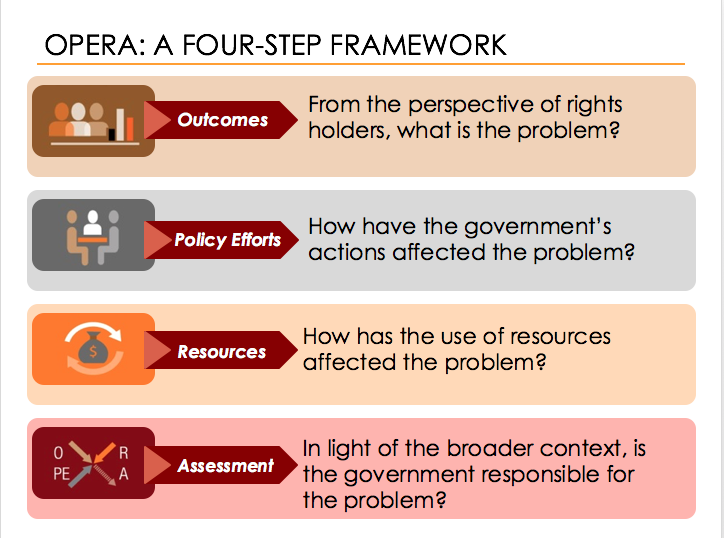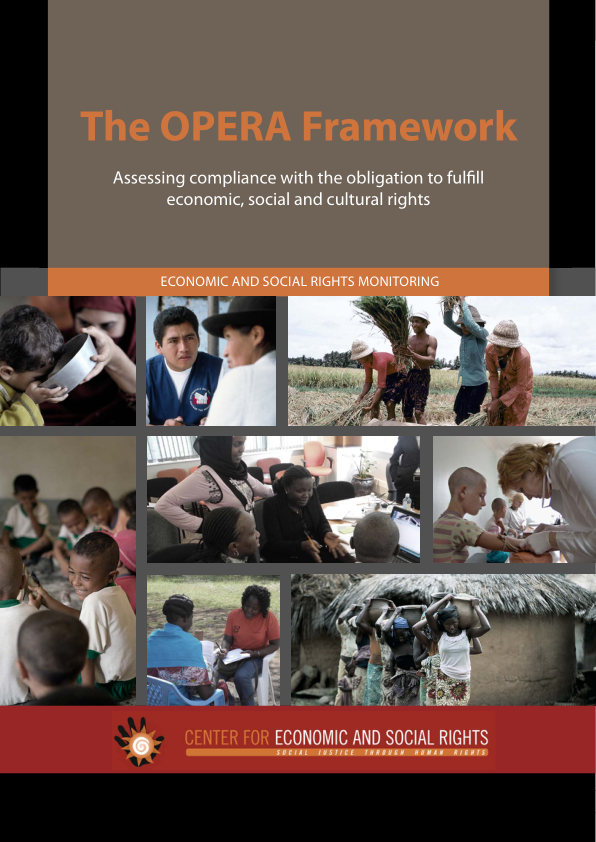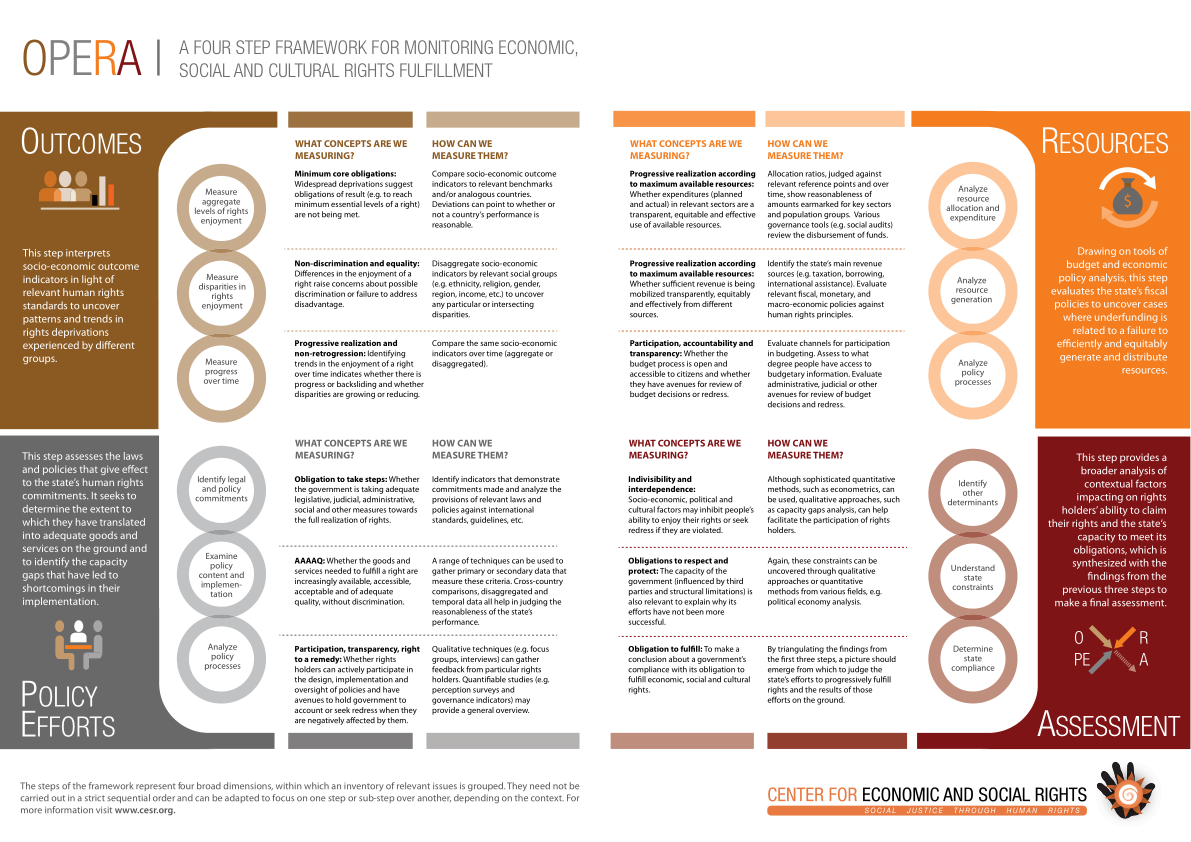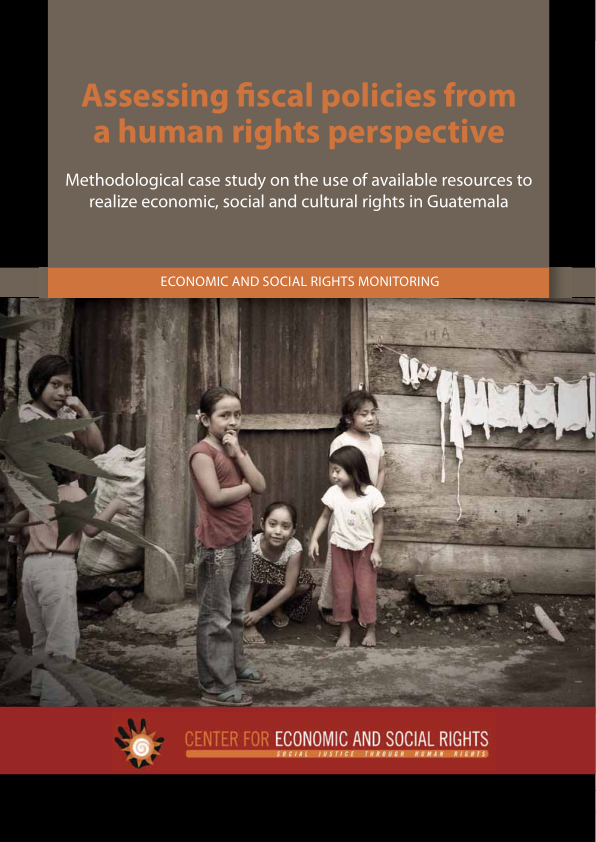 While important progress has been made to develop new tools and techniques for monitoring the fulfillment of ESC rights, there has been a tendency to focus on specific aspects of the obligation to fulfill ESC rights, for example using indicators and benchmarks to assess progressive realization, conducting budget analysis to assess maximum available resources. Although such techniques can be complementary, an overarching framework that weaves together this wide variety of different tools and techniques is needed in order to give a comprehensive picture of compliance.
While important progress has been made to develop new tools and techniques for monitoring the fulfillment of ESC rights, there has been a tendency to focus on specific aspects of the obligation to fulfill ESC rights, for example using indicators and benchmarks to assess progressive realization, conducting budget analysis to assess maximum available resources. Although such techniques can be complementary, an overarching framework that weaves together this wide variety of different tools and techniques is needed in order to give a comprehensive picture of compliance.
To address this gap, CESR has developed a simple, yet comprehensive four-step framework to analyze various aspects of the obligation to fulfill economic and social rights. Adopting the acronym OPERA, the framework incorporates different measures for specific human rights principles and standards,by framing them around four levels of analysis: Outcomes, Policy Efforts, Resources and Assessment.
A guiding lens for CESR's work, the OPERA framework allows an assessment that triangulates outcomes, policies and resources to provide a much fuller picture of what a state is doing to promote the realization of specific rights. Importantly, it traces economic and social deprivations and disparities back to the actions or omissions of the state, to make the case that they constitute an injustice and a violation of human rights.
The OPERA framework
The OPERA framework is designed to be dynamic and adaptable to different contexts; serving as guiding resource for human rights practitioners and advocates. An overview of the steps in the framework follows.
1. Outcomes: assessing the level of realization of the right
The first step uses indicators measuring relevant development outcomes such as maternal mortality rates or primary school completion to assess the enjoyment of basic elements of economic and social rights in a given country, to understand minimum core obligations. Data disaggregated by gender, ethnicity, location or economic status highlights disparities in the enjoyment of these rights across population groups, to assess the principle of non-discrimination. Tracking these indicators across time provides a measure of the progressive realization of these rights. Comparing disaggregated data across time makes visible any disparities in the rates of progress. International or regional comparisons, particularly between countries with comparable levels of aggregate wealth, provide a benchmark for identifying whether a country is under-performing in a particular outcome indicator, taking into account its resources.
2. Policy Efforts: assessing the commitment and efforts of the state to realize the right
The second step seeks to assess whether a country is complying with the duty to "take steps" that are "deliberate, concrete and targeted," by analyzing a government's international human rights commitments and the constitutional and legislative provisions that give effect to them. Quantitative and qualitative information on the availability, accessibility, acceptability and quality (the "AAAQ" criteria) of relevant interventions that give effect to economic and social rights illustrate how these legal and political commitments have translated in practice. Finally, the processes through which policies are formulated and implemented are also analyzed to determine whether they abide by the principles of participation, accountability and transparency.
3. Resources: assessing whether the state is devoting adequate resources to the right
The third step analyzes the government's budget from the perspective of "maximum available resources." It assesses not only expenditure, but also revenue to determine whether resource allocations are equitable and effective and whether fiscal policy choices generate sufficient resources. This step can also include an analysis of the process of the budget cycle from the perspective of the human rights principles of participation, non-discrimination, transparency and accountability.
4. Assessment: understanding constraints, before making an overall assessment
The final step draws together the findings from the previous steps, to determine whether or not a state is in compliance with its economic and social rights obligations. Before doing so, however, it pauses to consider the constraints faced by the state in its efforts to realize the rights. This ensures that the broader context in which the state is operating is taken into account as part of the overall assessment. Reflecting the indivisibility and interdependence of rights, this first requires identifying the social, economic, political or cultural factors that prevent people from enjoying their rights. It then identifies how the actions or omissions of non-state actors negatively impact on the state's ability to enact policies and allocate resources to fulfill the rights under review to see if the state is abiding by the duty to respect and protect and if international non-state actors are in breach of their transnational obligations. Finally, a holistic assessment of the government's compliance with its economic and social rights obligations is made.



